Table of Contents
How Oriental Rugs Are Knotted
Hand knotted Oriental rugs are pieces of art not just accessories for your home. Throughout history, these handmade rugs have been the object of fascination, desire, and status.
Browse our history of area rugs to learn all about the history of Oriental rugs and the weaving methods used to create them.
How Persian Rugs are Made: Anatomy and Construction
In this video we do a deep dive into the anatomy and construction of authentic Persian Rugs. We explain the major components that make up a Persian rug, and look into each component in detail. We cover the foundation: Warp and Weft, the knots and pile, types of knots, the edge, the fringe and much more.
Introduction
Evidence suggests that thousands of years ago, nomadic tribesmen between Eurasia and Mongolia were the first to create pile carpets. These carpets were woven to add warmth and comfort to their simple tent homes. As more and more tribes mastered the technique of weaving pile rugs, it became a common practice to incorporate their creativity into the designs transforming a trade skill into works of art.
Area rugs became not just a functional necessity in their tent homes but a symbol of taste and refinement by adding personality and beauty to their sparse surroundings.
Today’s rug designs are more sophisticated, but they serve much the same purpose, lending beauty, warmth and personality to enhance a home. When considering a rug for your home, there are a number of reasons why you might decide upon hand knotted Oriental rugs or handmade Persian rugs.
Handmade rugs are much more durable than mass-produced machine made rugs. Handmade rugs are usually made with natural materials such as cotton, wool or silk.
These natural fibers last longer and release no harmful gasses into the environment over time. And since each rug is hand-knotted, each strand has been tied individually for greater combined strength and consistency. instead of machine-made ones. Quality is the most important consideration.
The Pile
Wool, silk, or combinations of the two are the traditional materials used. Synthetic materials are never used in the pile or foundation of handmade rugs. Dyed wool from Merino Sheep is customarily found in tribal rugs, and depending on the region, will vary in quality.
There are three types of wool used in creating wool rugs – white wool, pearl colored wool, and multi-colored wool.
Black wool cannot be dyed and is therefore not used in traditional rug making.The characteristics used to evaluate good wool is a thick and even texture, the curl of the wool, and the oiliness of the wool – oil prevents the strands from breaking resulting in a longer, thicker piece of wool.
Top quality wool is sheared from the head, neck, back, and under the stomach of the sheep. The second best quality wool is sheared from the feet, arms, shoulders, and sides.
Oriental rugs are made with the finest and softest wool while in Turkish and Indian rugs, the wool tends to be coarser. Most Chinese rugs are made of silk, primarily because China is the world’s leading producer of both natural and manmade silk, and also because the Chinese once believed that the use of wool was a barbaric practice.
Today, the finest rugs are made of silk, and the most luxurious Persian rugs may actually feature highlights containing threads of pure gold.
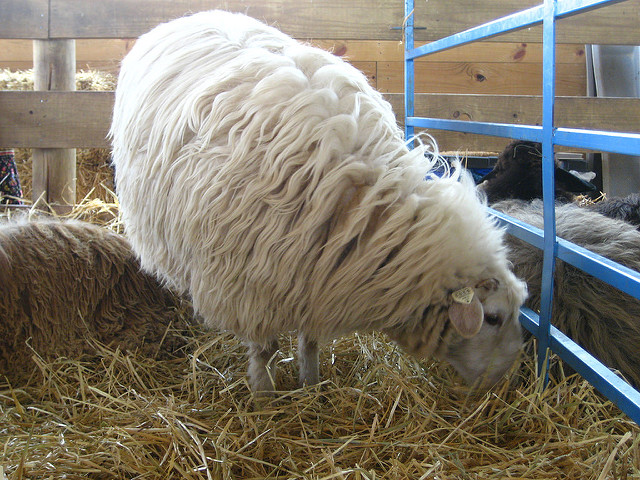
The Foundation - Warp and Weft
The foundation of hand knotted rugs is made up of strong threads that run the length (warps) and the width (wefts) of the carpet. In Turkish and nomadic rugs, including those from Western Iran, tightly spun undyed wool is used almost exclusively for the warp and weft.
The foundations of finer pieces from Oriental workshops today are often cotton, and only the very finest rugs in Iran are woven on silk.
The warp and the weft consist of a series of parallel vertical threads stretched taut around the two beams of loom. The number of warp threads strung on the loom determines the fineness of wave. For instance, an Isfahan rug may have between thirty and forty warp threads per inch, whereas an Afghani rug may only have eight to twelve warps per inch.
The Tools
In order to operate the loom, the weaver needs a number of essential tools: a knife for cutting the yarn as the knots are tied; a comb-like instrument for packing down the wefts; and a pair of shears for trimming the pile.
In Persian rug Tabriz the knife is combined with a hook to tie the knots which lets the weavers produce very fine rugs, as their fingers alone are too thick to do the job.
A small steel comb is sometimes used to comb out the yarn after each row of knots is completed. This both tightens the weave and clarifies the design.
A variety of instruments are used for packing the weft. Some weaving areas in Iran known for producing very fine pieces use additional tools.
In Kerman, a saber like instrument is used horizontally inside the shed, and in Bidjar a heavy nail like tool is used.
Bidjar is also famous for their wet loom technique, which consists of wetting the warp, weft, and yarn with water throughout the weaving process to make the elements thinner and finer. This allows for tighter weaving. When the rug is complete and dried, the wool and cotton expand to make the rug incredibly dense and strong.
The Fringe
At either end of the carpet, the warp may form a variety of fringes. The weaver decides how they will shape the fringes, either by braiding, knotting, or simply twisting it.
The type and length of fringe is not a standard characteristic of rugs of the same area and the fringes have nothing to do with the quality of the carpet.
The Dyes
Until the introduction of chemical dyes in the late 19th century, only natural color sources such as fruits, vegetables, bark, roots and fungi were used. Most popular were the madder root used to produce reds, and the indigo plant for blues. |
Chemical dyes are more popular today but natural dyes are still common in Persian tribal rugs. Before wool is dyed, it is prepared by scouring in boiling water followed by steeping in a mordant. Next, it’s placed in a big pot with the prepared dye and boiled for a few hours. It is then rinsed in water until there is no more running of color.
Although natural colors are fast, they do fade slightly over the course of time when exposed to direct sunlight and alkalis. This fading, however, produces a muted antique look which many people desire, and which cannot be duplicated with chemical dyes.
Popular Rug Patterns
Techniques and Construction
The Long Weaving Process
The weaving of pile rugs is a difficult and tedious process which, depending on the quality and size of the rug, may take anywhere from a few months to several years to complete.
There are two methods in threading the wool. First is the old fashion way of hand spinning it (most old rugs are hand spun). Second, is by utilizing tools to spin the wool forming it into thread. Some rug weavers still use the old fashion method of hand-spinning the wool to make wool carpet rugs because it makes the wool softer, durable, and shiny.
When the loom with foundation is ready they will start with weaving knot by knot until one line knots its finished and then weaver will use a weft to protect the lines of the knots and keep them in line. By utilizing different colors and number of knots they will bring different shapes into the rug.
In order to lock in all the weaving of the rug at the end of weaving the rug they weave kilim or chain weave.
The heddle rod is attached to alternate warp threads by means of loops and as it is raised half the warps are raised creating a shed through which the weft shoots can be threaded.
Then the shed stick, which separates other alternate warp threads, and is situated by the warp beam (furthest from the weaver) is moved, providing a counter shed through which other wefts can be threaded.
The first part of the rug to be woven is a length of ‘kilim’ (wefted-faced plain-weave) and a similar finish is applied to the other end to complete the rug. The kilim end acts as a firm guard which prevents the rug from fraying.
In urban rugs, the kilim ends are normally between 1 1/2 inches to 1/16 inch (1.5-38mm) in length. In tribal rugs, for example, those woven by Kurdish, Turkoman or Baluchi weavers, long kilm ends may provide a decorative feature at the ends of the pile. In the piled part of a rug, the wefts provide support for the knots.
After completing a row of knots, the weaver passes on or more weft shots in and out of the warp threads, then beats the fabric down by hand using a heavy metal comb.
The wefts hold the knot in place and their number and thickness also determine the vertical knot count of the rug.
Thus in some tribal rugs made in Persia, as well as in some Caucasian and North African rugs, multiple wefts are provided to separate the rows of knots and thus to give vertically steeper designs, often, however at the cost of producing a looser, less durable weave.
In most tribal and village rugs, the wefts are of wool, less frequently of cotton, although, as in the case of warps, the use of cotton has increased in some areas during this century. Cotton wefts are not necessarily an indication of recent production, however.
In a number of early Chinese and Persian carpets cotton was the traditional weft material and some early Turkoman rugs have cotton or mixed wool and cotton wefts. Woolen wefts in many Persian, Turkish and some Caucasian rugs are often dyed, mainly in a shade of red; in other Caucasian rugs and in most Turkoman rugs, they are of undyed ivory or brown wool. Silk wefts are found not only in silk-pile rugs but in some finely woven wool-pile rugs.
How The Total Weft Thickness Is Determined
The total weft thickness is determined not only by the thickness of the yarn but by the number of strands used to form the weft shot (normally one or two in woolen weft, two or three in cotton wefts and multiple strands in silk wefts) and by the number of shots passed between the rows of knots.
Two shots are normal for most rugs but single-wefted fabrics are found in tribal as well as urban rugs. In some Persian rugs, for example, those made in Kirman in the south and in Bijar in the west, three weft shots are provided in which two outer shots are given a different degree of tension to the inner to provide a two-level ‘depressed’ foundation.
While many rugs are woven with the weft shots passing between the warp threads in a regular manner, producing a flat fabric, in others, extra tension is applied to one or more of the weft shots in such a way that alternate warp threads are displaced vertically, forming a two-level foundation on which the two lobes of the knot are placed at an angle.
In extreme cases, one of the warps of a pair may lie directly above the other, so that from the back of the rug, only one of the two ridges is visible. Such rugs are often said to have a ‘depressed ‘structures are more difficult to repair.
The Degree of Depression
The degree of depression also serves as useful identifying features for different types of rugs. In rugs with a Turkish (symmetric) knot, depression causes the pile to slant either to the left or the right, depending on the knotting technique.
In Persian Oriental rug or asymmetrically knotted rug, the slant of the pile is towards the direction in which the knot is open.
The sides of a rug are normally secured by a selvedge, formed from one or several warp threads, used singly or twisted together to form ‘cable’ which are bound by the weft shots to produce a cord.
In other cases, the wefts are woven in and out of individual pairs of warps in a figure of eight which may be extended to form a flat, wide side finish.
On many rugs, additional protection or decoration may be applied to the selvedge by an extra binding of wool in one or more colours.
The Loom
Vertical looms are undoubtedly more comfortable to operate. These are found more in city weavers and sedentary peoples because they are hard to dismantle and transport.
There are three broad groups of vertical looms, all of which can be modified in a number of ways: the fixed village loom, the Tabriz or Bunyan loom, and the roller beam loom.
The Knots
When the loom with foundation is ready they will start with weaving knot by knot until all the knots on one line are finished. The weaver will then use a weft to protect the lines of the knots and keep them in line.
By utilizing different colors and number of knots they will bring different shapes into the rug. In order to secure the end of the rug and prevent un-knotting, the weaver will weave a kilim or chain weave.
Two basic knots are used in most Persian and Oriental rugs: the symmetrical Turkish or Ghiordes knot (used in Turkey, the Caucasus, East Turkmenistan, and some Turkish and Kurdish areas of Iran), and the asymmetrical Persian or Senneh knot (Iran, India, Turkey, Pakistan, China, and Egypt).
To make a Turkish knot for an Oriental rug, the yarn is passed between two adjacent warps, brought back under one, wrapped around both forming a collar, then pulled through the center so that both ends emerge between the warps.
Other knots include the Spanish knot looped around single alternate warps so the ends are brought out on the either side and the Jufti knot which is tied around four warps instead.
We are proud to sell many items made in similar methods used above.
Please also make sure to browse our site for wholesale area rugs sure to beautify your home.
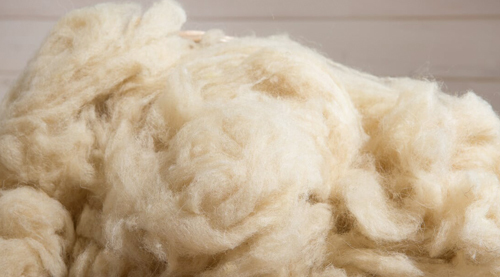
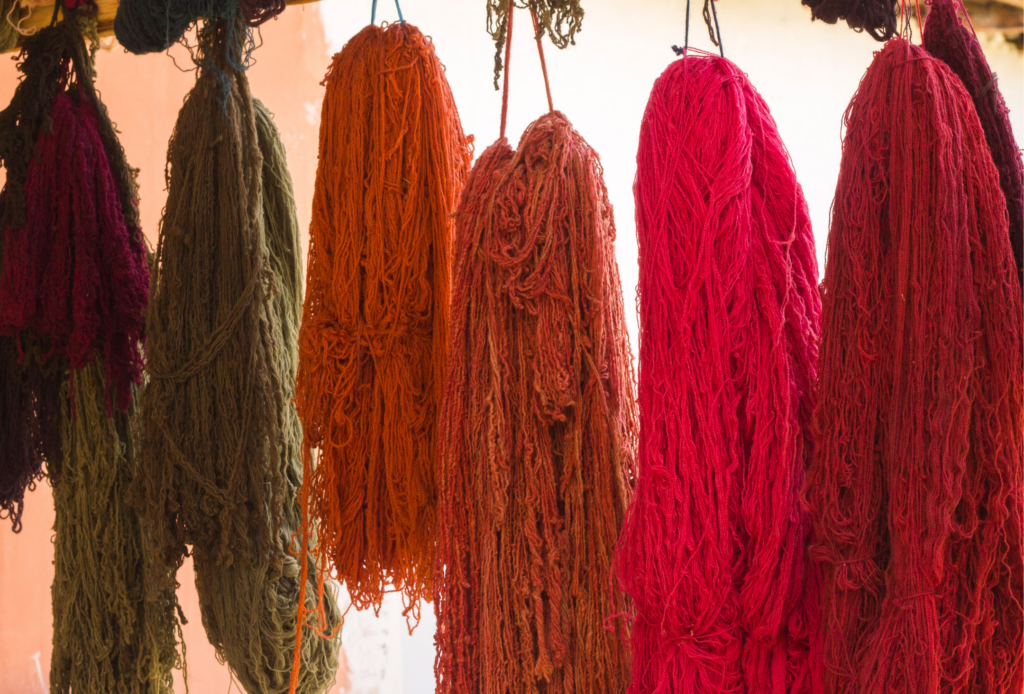
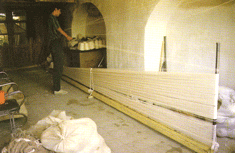
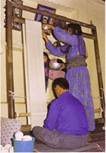
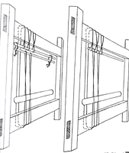
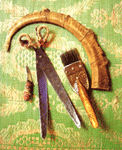




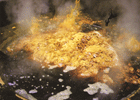
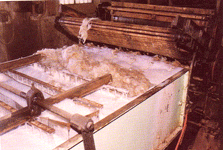
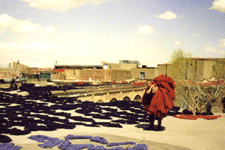
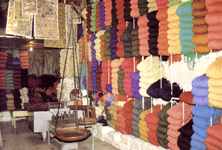
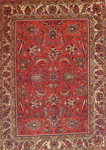




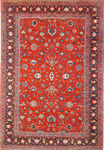



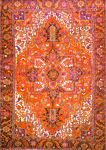












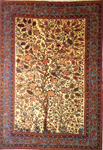









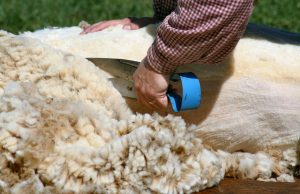

4 thoughts on “Anatomy and Construction of Persian Rugs”
Hi, I was interested in these rugs, very beautiful, I was wondering if a rug had a knot count of 250 per inch how big in diameter is the actual thread that would form the pile and the warps and weft in the rug, I was just wondering if in such a perfect rug made to such a high knot count how dense the fibre piles would be ? and what would be the depth of the pile I could expect to find in a 250 kpi rug, really enjoying looking around your website seeing so many wonderful rugs
Dear Lan,
Rugs can have 70 Knots to 1000 knots per square inch and the thickness of the pile depends on the knots if the knots are more the Thickness of the pile is less for a rug with 250 knots per square inch the thickness of the pile is medium. Also, the thickness of the pile depends on the weft too.
Are fringes integral to the rugs or are they added on as an option?
Yes they are the foundation of the rug, so they are integral part of the rug.